On my first African safari—an adventure to central South Africa—I had cobbled together the best rifle/cartridge/scope combo I could afford at the time. The Winchester Model 70 may have been the push-feed model, but I loved it, and the .375 Holland & Holland surely seemed suitable for the antelope at the top of my list: a good eland bull. I had made a detailed drop chart for the 300-grain Swift A-Frame bullets that the gun liked so much, and the 3-9x40mm Leupold VX-1 was the finest piece of glass I’d owned up to that point in time.
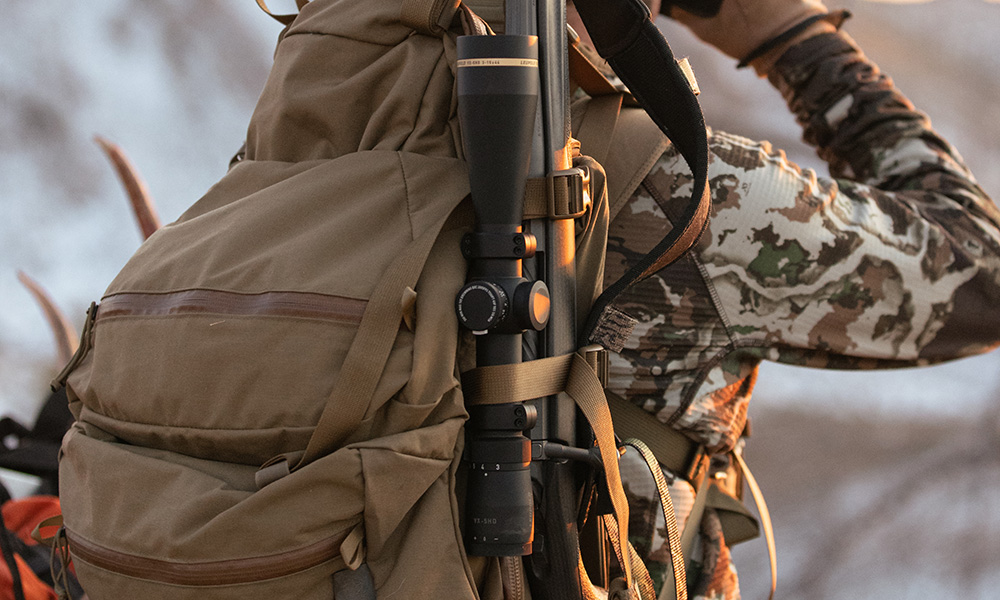
We spent a few days tracking those huge antelope, and much to my dismay, the only shot we had was across a wide open plain, with a good eland bull standing 400 paces away. I’d trued the rifle at 200 yards, but hadn’t any opportunity to stretch beyond that distance. Leaning against a rock-hard termite mound, I got as steady as possible, estimated the 36 inches of holdover I needed to at that (estimated) distance, and broke the trigger. I heard the impact on the big shoulder bones, and was absolutely giddy when I stood over that bull; I also knew there had to be a better means of getting a bullet precisely on target at longer distances.
In the days before reliable rangefinders, a whole lot of guessing went on, and though there were scope reticles which could help with holdover—if you really knew how to use them, and it wasn’t easy for the average shooter—the “hold-on-the-top-of-his-back” method was too-often employed, with varying levels of success. Fast forward to 2020, and I’d finally find the system which makes life the simplest for the hunter: Leupold’s Custom Dial System (CDS). This simple yet effective dial takes a big chunk of the conversion from distance-to-target to clicks-on-the-elevation-dial out of the equation. Prior to this system, if you used the elevation turret to adjust your bullet’s point of impact, you needed to know the exact amount of angle—whether you used minutes of angle or milliradians—which was required to move the reticle in order to adjust for the bullet’s trajectory.
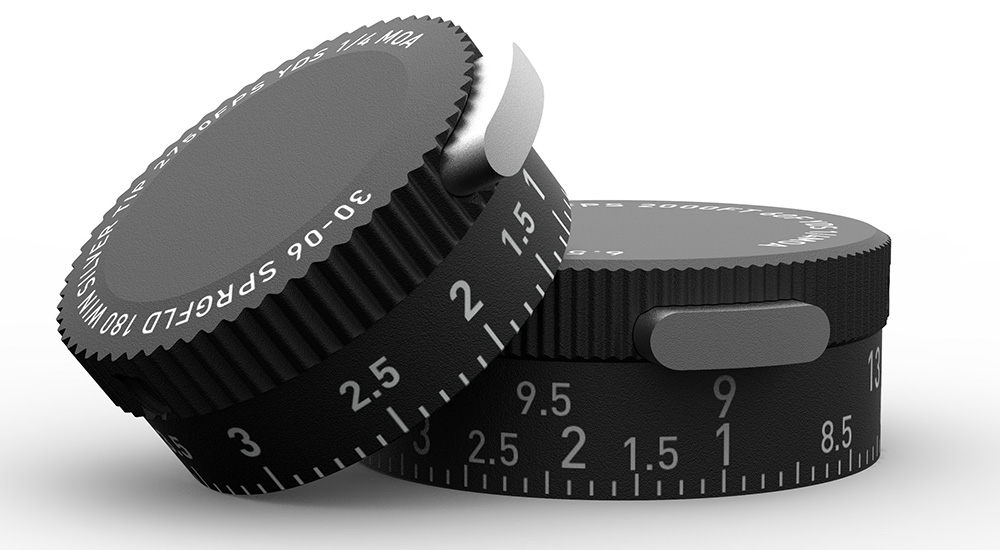
Many of us had range cards taped to the stock of the rifle, so once the range to target was determined, we could find the corresponding angle measurement, and then adjust the dial accordingly. For example, if I had my .300 Winchester Magnum, loaded with Hornady’s 178-grain ELD-X Precision Hunter ammo, and needed to hit a deer at 350 yards, I would have to consult my chart. With a 200-yard zero, I’d need 3.3 MOA of elevation to adjust for drop. I’d then dial the elevation turret to 3.25 MOA (as close as I can get to 3.3 MOA) and take the shot.
Speaking from personal experiences, I’ve looked up from the conversion chart, adjusted the elevation turret and found myself staring at an empty field where once stood a deer, coyote or fox. Leupold’s CDS turret does that conversion for you; by applying the trajectory of a particular bullet at a particular velocity and marking the dial in yardage instead of the traditional MOA or mil markings, it greatly reduces the time required to adjust the turret and get on target. And best of all, if you purchase a Leupold scope with the CDS turret, the first Custom Dial is prepared for you free of charge.
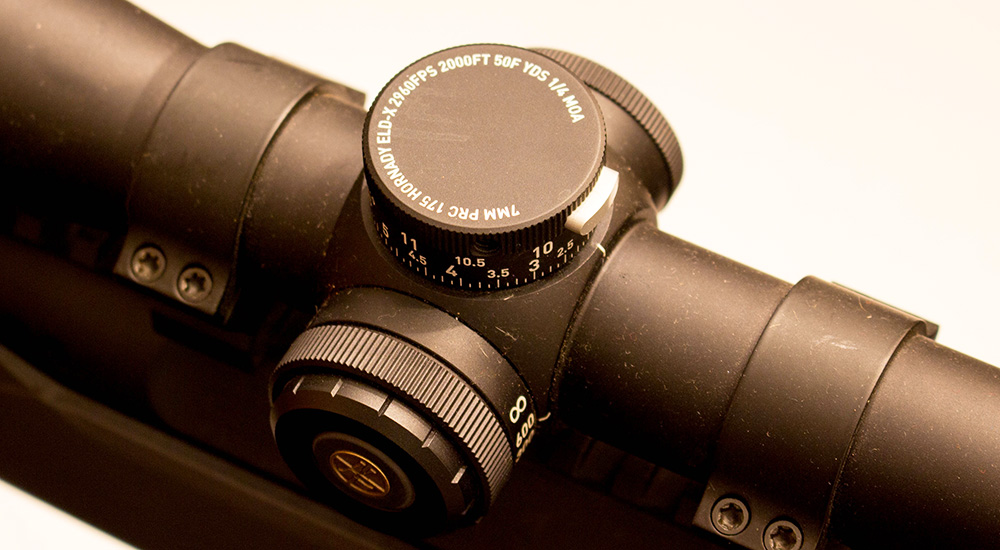
The internal mechanism isn’t any different to a regular riflescope; the dial moves in MOA or mils, but how the dial is marked is what makes the system so efficient. The customer must provide the data, or advise which factory load they have chosen. Bullet weight, ballistic coefficient and muzzle velocity all dictate the cartridge’s trajectory, as well as the elevation at which the rifle will be used. Once those parameters are defined, the customer must indicate what “zero” they wish to use; most common are 100 or 200 yards. Using my example of the .300 Winchester above, the lowest number on the dial would be a 2 (indicating 200 yards), and if you were to count the clicks to reach 3.5 (350 yards), you’d hear 13 of them, or 3.25 MOA. The 400-yard marking would be at 4.5 MOA, and the 500-yard mark at 7.25 MOA, so on and so forth. For my hunting needs, this allows me to take shots to 200 yards without making any adjustments at all, and beyond that, the CDS turret is marked in 50-yard increments in numerals, with hashmarks along the base of the turret to help interpolate yardages in between the 50s.
Mathematical equations aside, the system is this simple: zero your rifle at the prescribed range, use your rangefinder to ascertain the distance to your target, dial that number on the CDS turret, and hold right on for trajectory (you will still need to make adjustments for wind deflection). It is the quickest system to go from rangefinder to trigger time that I’ve experienced, and I can confidently say that it works. Depending on the model of scope you have and its total elevation adjustment, as well as how “flat” your bullet/velocity combination shoots, the furthest distance marked on the turret will vary. For example, my Browning X-Bolt 6.8 Western wears a Leupold VX-6 3-18x44mm, and is calibrated for the 175-grain Sierra bullet at 2860 fps, in the Browning ammo, at 3,000 feet above sea level and at 45 degrees Fahrenheit. With 75 MOA of total elevation adjustment, my turret is marked out to 1,200 yards; keep in mind that this is a magnum cartridge, albeit with the heaviest and slowest bullet for that cartridge, and a slower cartridge won’t be able to have markings to that distance. For the hunter, I don’t think this will pose an issue, though if you ask your rifle/scope combination to perform double-duty for both hunting and target work, you might want to consult a ballistic chart before ordering a scope to see how much elevation you’ll want.
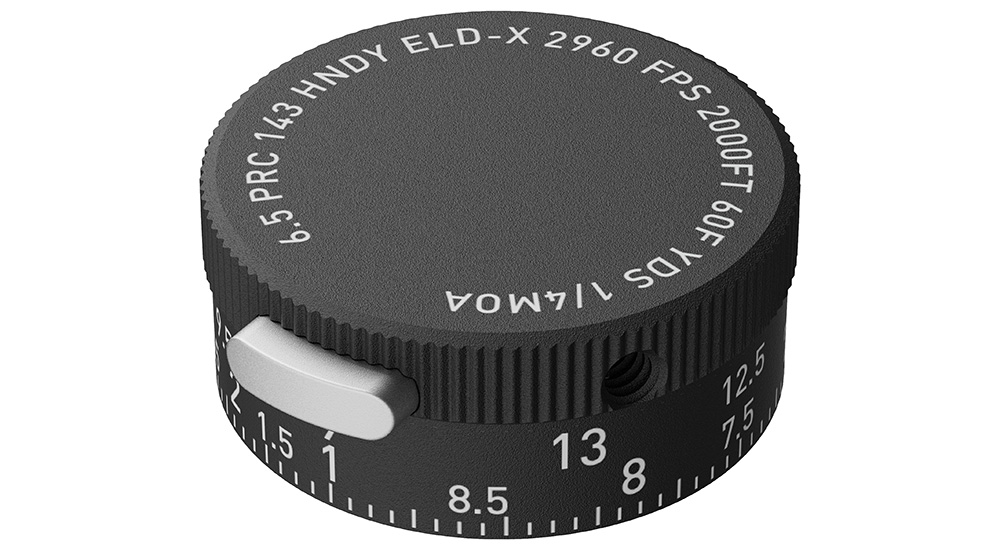
Changing the CDS turret is a simple process. Zero the rifle at the prescribed distance, paying no heed to the numbers, and then use the supplied Allen wrench to loosen the three set screws which hold the turret in place. Pull the dial up (without moving the elevation adjustment) and align the number which corresponds to your zero with the hashmark on the scope body. Tighten the set screws and you’re in business.
I feel this system works much better than a compensated reticle, as the magnification setting becomes irrelevant (unless you consider wind deflection adjustments on the horizontal bar), and the concept of a dead hold is much faster than any holdover method. For some hunters—especially those of us who are accustomed to hunting inside of 200 yards, and have never touched the turret in the field—the concept of having a moving elevation turret will seem foreign. However, the CDS uses a bold zero lock, which keeps the dial firmly in place until you depress the silver button; only then can you make an elevation adjustment. Turn it back to the zero value, and the button pops back out, locking your dial.
Is there a downside to the CDS setup? Well, if I had to play devil’s advocate, I’d say that the shooter is married to that one load for which the dial is calibrated. It is possible to purchase additional dials for a different load, and if you routinely switch between different loas—say a 150-grain bullet in your .30-06 for deer, and a 180-grain bullet in that same rifle for elk and moose—having a custom dial for each is a good idea. Additional dials are $80.
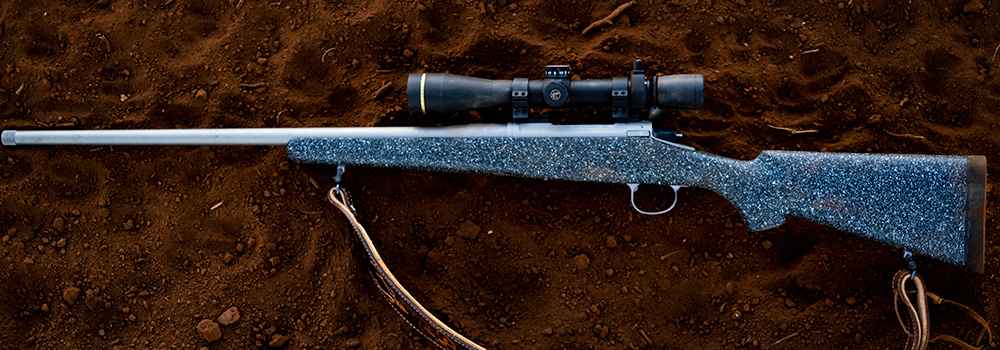
I can’t name a faster, simpler or more reliable system for accurately placing shots at longer distances, and if you have the room to stretch your cartridge’s legs, you will find the CDS to be an invaluable shooting aid. On a Colorado elk hunt a couple years ago, our hunting group was supplied with Winchester rifles topped with Leupold scopes and CDS dials marked for the then-new 162-grain Winchester Copper Impact in the 6.8 Western. The five of us zeroed the rifles at 100 yards, and then proceeded to walk the cartridge/dial system out to 500 yards on steel targets. To the man, the system worked perfectly. While I haven’t had a chance to use the CDS on a prairie dog hunt yet, I can easily see how handy this could be when the towns are busy and the barrels are hot. When you’re working dogs at 500 yards, and then that 200-yard prairie dog makes the mistake of sitting up and posing, the CDS would make short work of him.
This system will also be right at home among mountain hunters, where the ranges are anyone’s guess. A sheep at 500 yards can be handled confidently when, under the stress of the shot of a lifetime, a twist of the dial gets you on target. Bravo, Leupold, you have revolutionized long-range shooting.











































